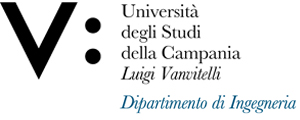Alberto D'AMORE
Insegnamento di MATERIALI PER L'AERONAUTICA E LO SPAZIO
Corso di laurea in INGEGNERIA AEROSPAZIALE, MECCANICA, ENERGETICA
SSD: ING-IND/22
CFU: 6,00
ORE PER UNITÀ DIDATTICA: 48,00
Periodo di Erogazione: Secondo Semestre
Italiano
| Lingua di insegnamento | ITALIANO |
| Contenuti | In questo corso sono impartiti i fondamenti della Scienza e Tecnologia dei Materiali basati sulle relazioni tra proprietà-struttura-processi dei materiali. |
| Testi di riferimento | J. Shackelford "Scienza ed Ingegneria dei MAteriali" a cura di Alberto D'Amore |
| Obiettivi formativi | Il corso ha lo scopo di fornire allo studente gli strumenti indispensabili per la conoscenza delle proprietà ingegneristiche dei materiali rispetto alle specifiche destinazioni d’uso. Il corso è basato sullo studio dei principi fondamentali che regolano le relazioni proprietà-struttura-processo dei materiali. Si specializza per l’apporto particolare di conoscenza dei materiali innovativi e dei relativi processi produttivi nell’ambito dell’ingegneria Aerospaziale. E’ prevista una sostanziale attività esercitativa. |
| Prerequisiti | Fondamenti dell'analisi matematica e della fisica. elementi di fenomenidi trasporto. |
| Metodologie didattiche | Lezioni frontali e di laboratorio |
| Metodi di valutazione | Prova scritta. Domande teoriche ed esercizi |
| Altre informazioni | Sono forniti appunti, dispense, tabelle e grafici. |
| Programma del corso | - Strutture cristalline dei metalli (Fcc,bcc, Hcp) . Slip systems. |
English
| Teaching language | Italian |
| Contents | This course teaches the fundamentals of Materials Science and Technology based on the relationships between properties-structure-processes of materials. |
| Textbook and course materials | J. Shackelford "MAterials Science and Engineering" |
| Course objectives | The course aims to provide the student with the indispensable tools for understanding the engineering properties of materials with respect to their specific intended use. The course is based on the study of the fundamental principles governing the property-structure-process relationships of materials. It specializes in the particular contribution of knowledge of innovative materials and related production processes in the field of Aerospace engineering. A substantial exercise is foreseen. |
| Prerequisites | This course teaches the fundamentals of Materials Science and Technology based on the relationships between properties-structure-processes of materials. |
| Teaching methods | Frontal and laboratory lessons |
| Evaluation methods | Written test. Theoretical questions and exercises. |
| Other information | Notes, handouts, notes and graphs are provided. |
| Course Syllabus | - Crystalline structures of metals (Fcc, bcc, Hcp). Slip systems. |








